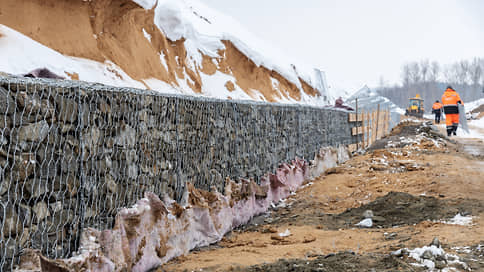Construction and illegal trade are driving global sand shortages closer
[ad_1]

In addition to growing forecasts for a shortage of technological raw materials such as copper or lithium, the availability of such basic types as sand, for example, is also becoming a problem – against the backdrop of an increase in its consumption due to construction and infrastructure projects, a shortage of it is expected in the world. 2050. Illegal sand trade can already be considered a global problem, states an article by economist David Taylor published yesterday in the February issue of Scientific American. Criminal schemes that have been used before are becoming more and more popular – the market for the illegal trade in sand is estimated at $200–350 billion a year. The solution to the problem is not yet entirely obvious: control over production “on site” is ineffective, and its digitalization requires time, which, according to UN estimates, is no longer available.
The problem of illegal sand trade is becoming global: the low threshold for entry into such a criminal business attracts more and more people every year – it is almost impossible to estimate their number even approximately. The prevalence of criminal schemes in individual countries, including Russia, is known, but has not yet been systematically studied. One of the first attempts to review this part of the black sand market can be considered an article by economist David Taylor, published in the February issue of Scientific American.
The size of this market is estimated at $200–350 billion per year, which is comparable to the total volume of illegal logging, gold mining and fishing. The continued expansion of the illegal trade is largely due to increased demand for concrete, glass and building materials. The trend is being recorded against the backdrop of an increase in construction volumes in developing countries. At the same time, the “legal” supply does not keep pace with the growth in demand (see chart).
According to UN estimates, the pace of even legal mining is much faster than the rate of reclamation of lands where sand was washed out and its supply by rivers, which could lead to a shortage of construction sand as early as 2050. Taking into account illegal mining, this deadline is getting closer: sand remains the second most used resource in the world after water. Given the degree of dependence on it, the UN proposes to consider the resource strategic and to “completely rethink” approaches to its extraction, but, as the organization admits, monitoring even the legal part of the market remains an extremely difficult task. It is almost impossible to track illegal trade; for an outside observer, it is virtually indistinguishable from legal trade. “Manual” control at all stages, as the experience of different countries shows, is ineffective due to corruption risks. It will not be possible to ensure digitalization of control in all developing countries in the coming years, although the delay, according to UN estimates, is bringing the “sand crisis” closer.
The article published in Scientific American does not provide a specific proposal for resolving the situation. It is noted, however, that supranational associations, with the support of the governments of individual countries, could create an interactive map of the spread of the problem. A systems perspective can help identify hotspots to test different solutions where illicit activity is particularly prominent.
[ad_2]
Source link






